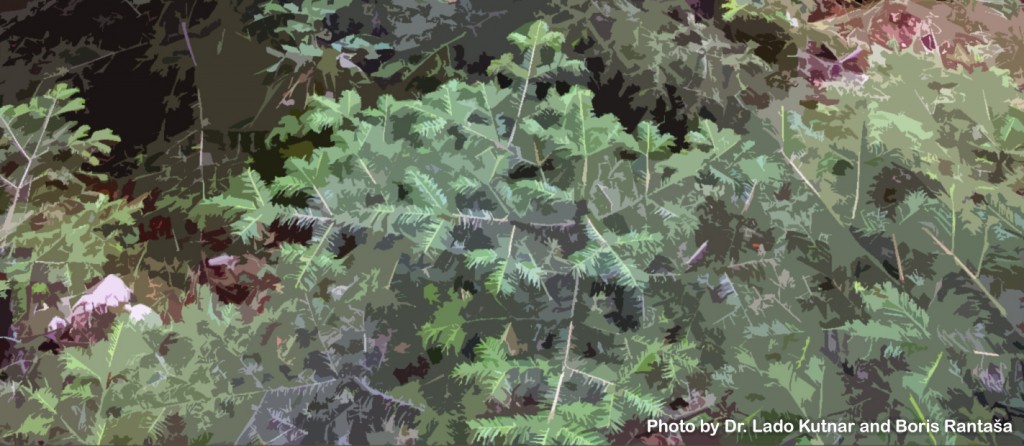Slow Growth of Silver Firs: Struggle or Patience?
Even though they look young, the seedlings of Silver fir can be surprisingly old. The seedlings on our forest genetic plots are growing even slower than speleothems – seedlings that measure only 4 mm in diameter are estimated to be at least 17 years old!

Demographic assessment of LIFEGENMON plots is full of surprises! Studying the age of silver fir seedlings on the forest genetic monitoring plot Smolarjevo in Slovenia showed that even the smallest seedlings (up to 20 cm in height and 4 mm in diameter) could be more than 17 years old. The reason for this phenomena is a special type of shelterwood system of forest management, introduced to these forests in 1905 by Edvard Pogačnik, a forest owner, in 1905. The forests are still managed similarly today.
With such management we are continuously maintaining dense tree canopies, allowing only a small amount of solar energy to reach the ground. The trees below the canopy level are growing extremely slowly, waiting for better light conditions. In our case, their diameter is growing only 0.24 mm per year. For example, the length of speleothems – secondary mineral deposits formed in caves, such as stalactites or stalagmites – can grow faster than the diameter of our silver firs!
The measurements were done on clean cuts of silver fir wood samples in the Microscopy room of the Slovenian Forestry Institute. Since the samples were not always cut perfectly straight, the images were captured at different angles and positions, allowing the operator to observe the sample in a focused view at every point of the sample surface. With such observations, the possibility of miscounting tree rings was minimalized. Also, the number of tree rings was determined conservatively for each sample, meaning that the reported number is the estimated minimum age. The rate of diameter growth could be even slower!
We can describe these slow movements in nature as the struggle of trees, or we can look at them as the power of patience. While not many tree species are able to survive for such a long time in the shadow of their ancestors, silver fir is an example of how rewarding the wait could be. Some researchers are suggesting, that the slow growing silver firs can reach better dimensions and vigour. If we look at the Slovenian tallest silver fir “The queen of Rog” – a tree that started growing somewhere around the time when Columbus landed his foot on the American ground – and we know that this tree is still adding millimetres to its already massive diameter (496 cm), the researchers might be on to something.
The contents of this blog are authored by Domen Finžgar. He is a forest engineer and a researcher at the Slovenian Forestry Institute, responsible for the work being done on LIFEGENMON forest genetic monitoring plots in Slovenia. Find out more about the people working on the LIFEGENMON project.












 Saving...
Saving...
Leave a Comment